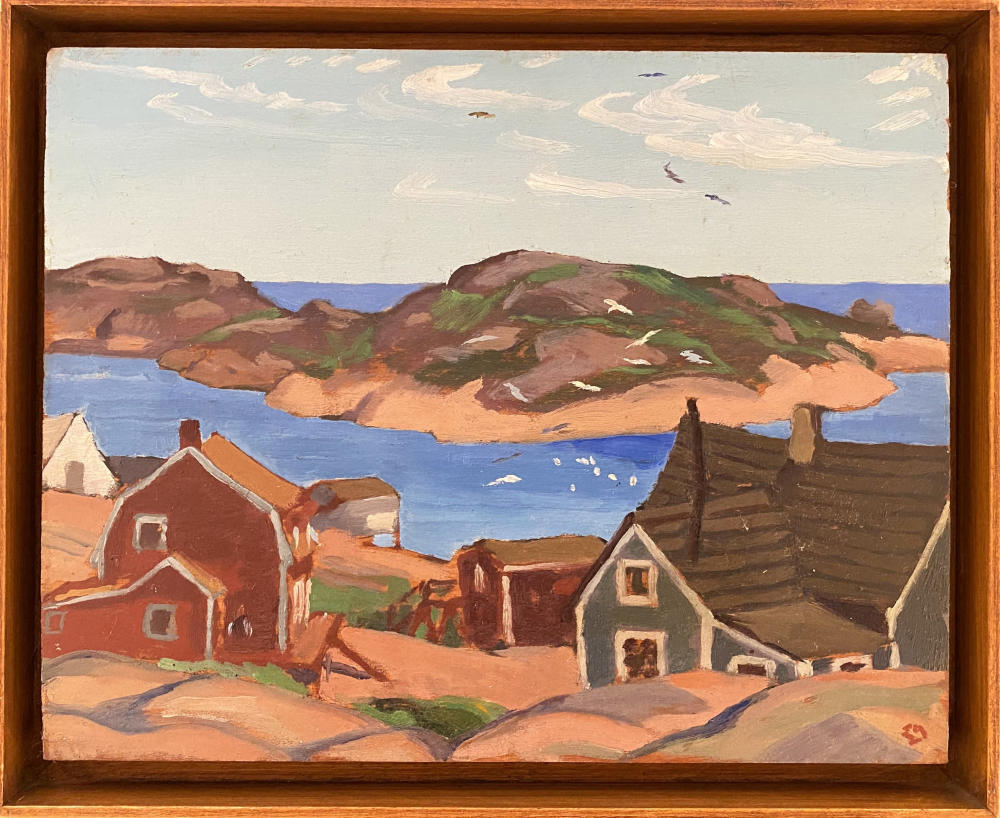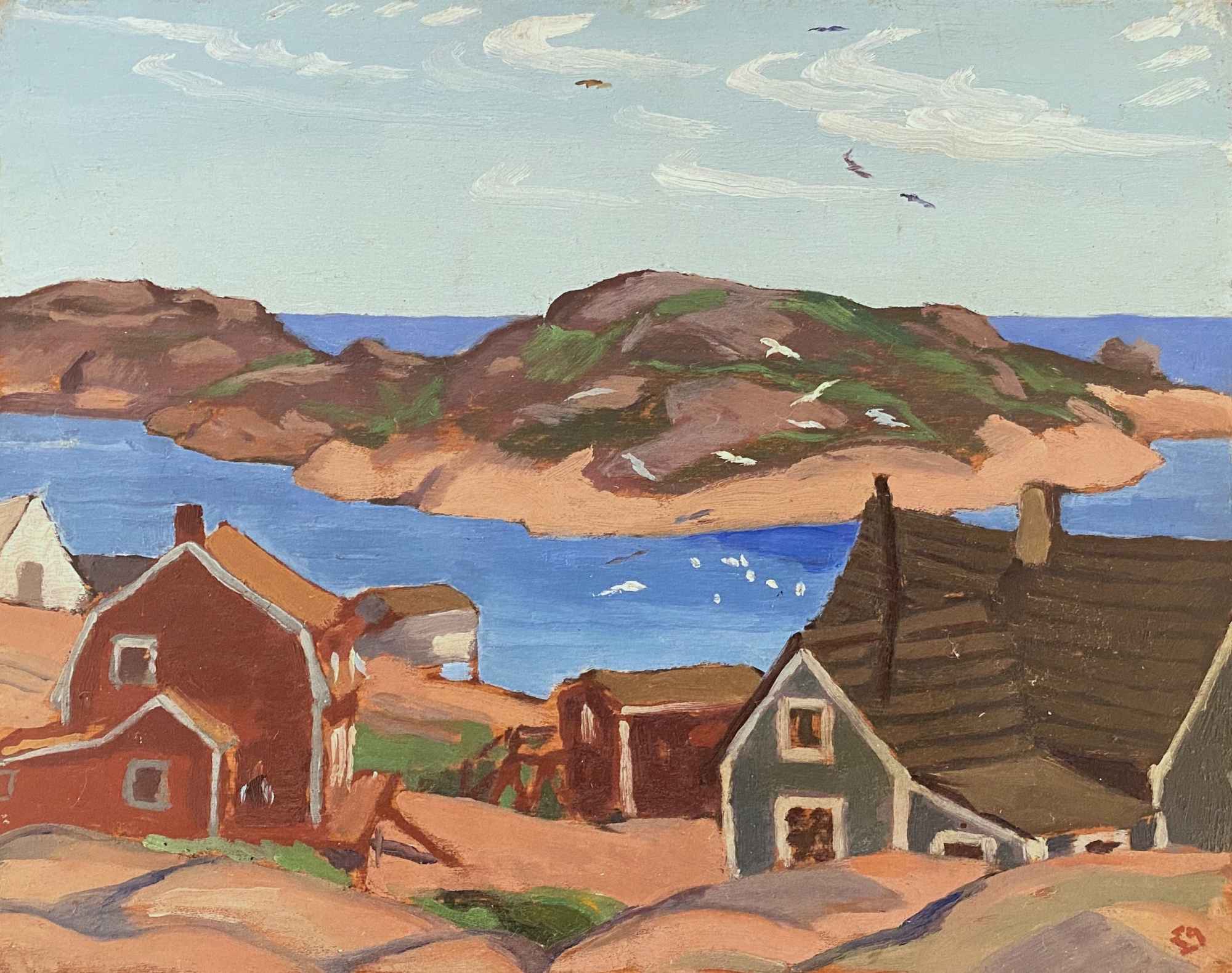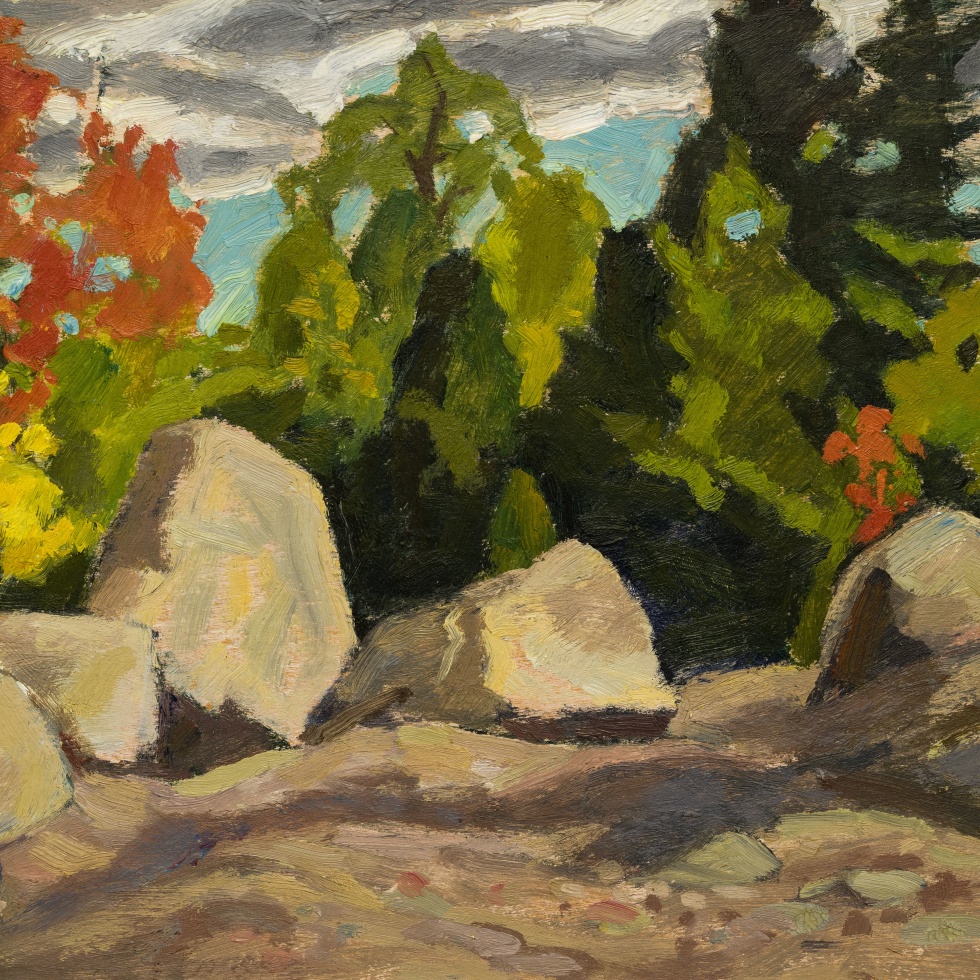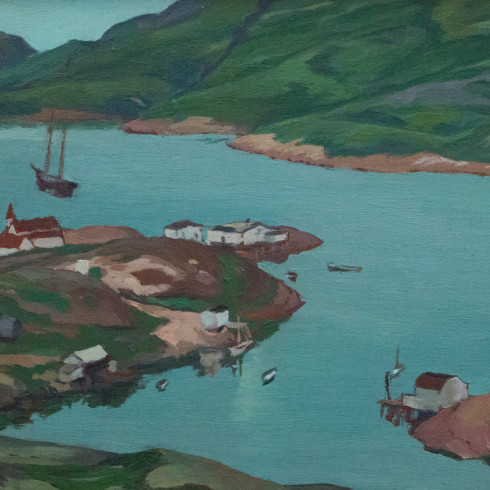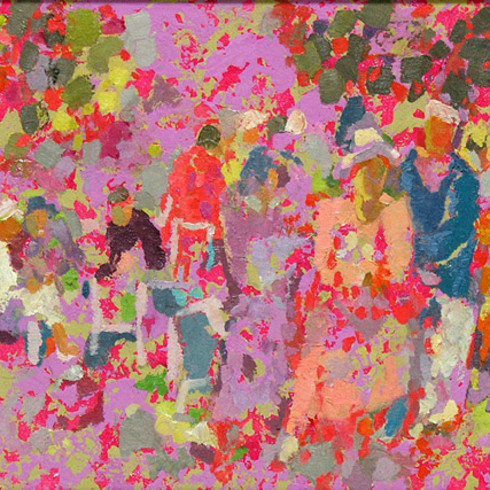Artwork for Sale
Fishing Village, Mutton Bay, 1932 (circa)
Oil on panel
8 3/8 x 10 1/2 in
21.3 x 26.7 cm
21.3 x 26.7 cm
This painting is presently on view at our Montreal gallery
$35,000
Inscriptions
signed with monogram, 'EH' (lower right); inscribed and signed by the artist on label (partially obstructed) ‘Mutton Bay - E. Holgate’ (verso)Provenance
Dominion Gallery, Montreal
Private collection, Montreal
By descent to the present owners
As a member of the Group of Seven, Edwin Holgate travelled twice to the region near the border of Quebec and Labrador, the latter at the time still part of the British colony of Newfoundland. In 1930, Holgate visited the fishing village of Natashquan, on the Gulf of St. Lawrence directly north of Anticosti Island. In 1932 he returned to Natashquan and also produced a series of paintings at Mutton Bay, another fishing settlement further along the coast of the Gulf. (Both villages are on the Quebec side of the Labrador border. A long-standing dispute over the demarcation line had been settled in 1927.)
The sketches that Holgate painted on his visits to these remote villages are consistently outstanding in quality, and identifiable by their sensational blues, greens and browns.
Montreal art dealers Walter and Gertrude Klinkhoff were in regular contact with Edwin Holgate and his wife Frances when they lived in Morin Heights, and later when the Holgates moved back to Montreal. The Klinkhoffs purchased as many works from Holgate as they could. It was a difficult endeavour because Holgate did not need money and was reluctant to part with his work. In his memoirs, Klinkhoff remarked at the esteem in which Holgate was held by other artists. “Holgate was highly respected by other artists. This is an important sign because artists, even if jealous and difficult of temperament at times, do recognize one another.” [1]
As a veteran of World War I, Holgate occasionally lunched at the United Services Club, across the street from Walter Klinkhoff’s Montreal gallery. Afterwards he would come in, sit on the couch in the main gallery, and be entertained with paintings by him and his colleagues that the Klinkhoffs were offering for sale. Sometimes, noticing the then-elderly artist fatigued, Alan Klinkhoff would offer to drive Holgate back to his nearby apartment. He fondly recalls Holgate reminiscing about the Group of Seven, and the days that are now the subject of many books. It was then that he purchased from Holgate a marvellous sketch of Mutton Bay, which he and his wife Helen continue to enjoy to this day.
____________________________
Footnote:
1. Walter Klinkhoff, Reminiscences of an Art Dealer (1993), p. 8.
The sketches that Holgate painted on his visits to these remote villages are consistently outstanding in quality, and identifiable by their sensational blues, greens and browns.
Montreal art dealers Walter and Gertrude Klinkhoff were in regular contact with Edwin Holgate and his wife Frances when they lived in Morin Heights, and later when the Holgates moved back to Montreal. The Klinkhoffs purchased as many works from Holgate as they could. It was a difficult endeavour because Holgate did not need money and was reluctant to part with his work. In his memoirs, Klinkhoff remarked at the esteem in which Holgate was held by other artists. “Holgate was highly respected by other artists. This is an important sign because artists, even if jealous and difficult of temperament at times, do recognize one another.” [1]
As a veteran of World War I, Holgate occasionally lunched at the United Services Club, across the street from Walter Klinkhoff’s Montreal gallery. Afterwards he would come in, sit on the couch in the main gallery, and be entertained with paintings by him and his colleagues that the Klinkhoffs were offering for sale. Sometimes, noticing the then-elderly artist fatigued, Alan Klinkhoff would offer to drive Holgate back to his nearby apartment. He fondly recalls Holgate reminiscing about the Group of Seven, and the days that are now the subject of many books. It was then that he purchased from Holgate a marvellous sketch of Mutton Bay, which he and his wife Helen continue to enjoy to this day.
____________________________
Footnote:
1. Walter Klinkhoff, Reminiscences of an Art Dealer (1993), p. 8.



